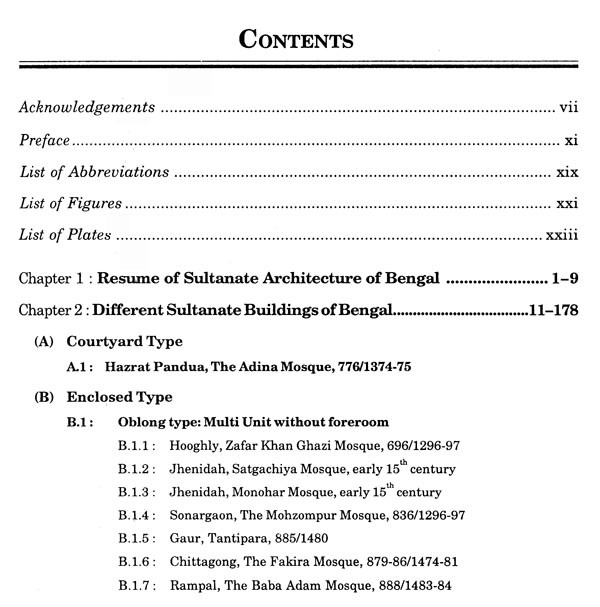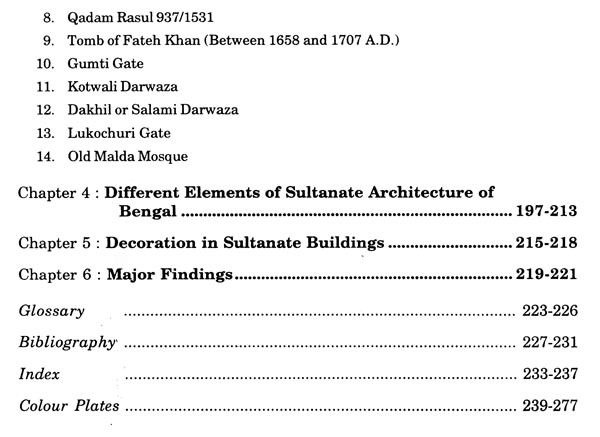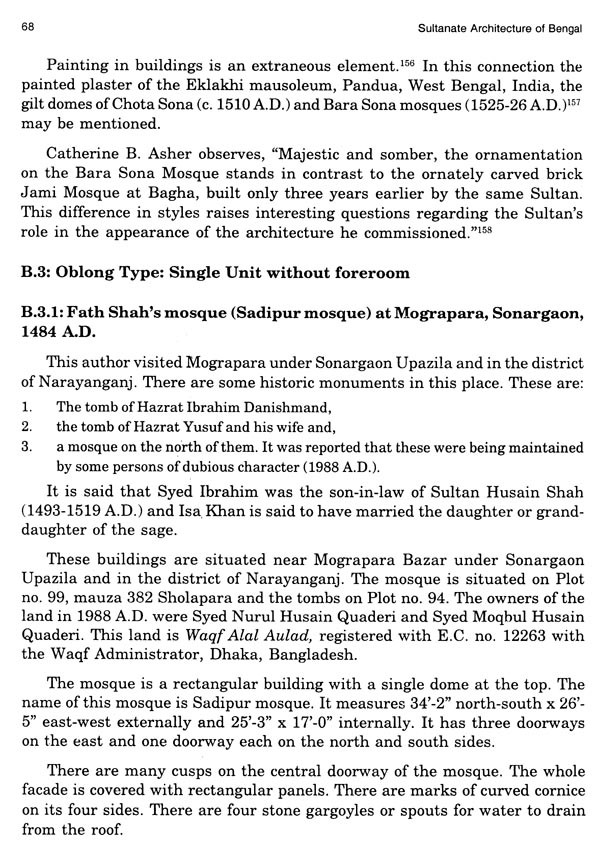
Sultanate Architecture of Bengal- An Analysis of Architecture and Decorative Elements
Book Specification
| Item Code: | AZG310 |
| Author: | Khoundkar Alamgir |
| Publisher: | KAVERI BOOKS |
| Language: | ENGLISH |
| Edition: | 2011 |
| ISBN: | 9788174791092 |
| Pages: | 298 (Throughout Color Illustrations) |
| Cover: | HARDCOVER |
| Other Details | 10.00x7.50 inch |
| Weight | 890 gm |
Book Description
Some elements may be classified as indigenous or extraneous without any doubt. But some of these elements give scope for controversy. Elements like glazed tiles and actuate system of buildings etc. are no doubt extraneous elements. On the other hand curved cornices and hut-shaped roofs of buildings etc, are of indigenous origin. Some elements are controversial, such as, small covered type mosques, profuse use of terracotta's, trefoil arched mihrab in the Adina mosque etc.
All the monuments described in this book have been visited by the author starting from 1979 A.D. Main aim and objective of this book is to trace the origin of different elements of Sultanate architecture of Bengal. This book contains six chapters i.e. Sultanate Architecture of Bengal, Different Sultanate Buildings of Bangladesh, Miscellaneous Buildings, Different Elements of Sultanate Architecture of Bengal, Decoration in Sultanate Buildings and Major Findings. These chapters are supported with illustrations, notes, references, bibliography and glossary as well as colour photographs.
In the first chapter we have given a short account of the Sultanate Architecture of Bengal. Though it has been observed that Muslim architecture began in this country from the time of Bakhtyar Khilji, Sir Banister Fletcher is of opinion that the Mongol invasions of the thirteenth century interrupted building activities in India, as in Persia. So, architecture as a whole was not so much developed also in Bengal at that time. Gradual development of architecture as well as various centres of architectural activities in Bengal in this period has been discussed. Bengal has been taken to mean the territory historically so-called and not the present-day Bangladesh.
In chapter two various monuments have been described and different elements incorporated in them have been shown. Shait Gunbad mosque, tomb of Khan Jahan, Ranavijoypur mosque, Reza Khoda mosque, Singar mosque, Bibi Begni's mosque, Chuna Khola mosque, Satgachiya mosque, Galakata mosque, Jorbangla mosque, Monohar mosque, Pirpukur mosque, Noon-gola mosque, Small Golden mosque, Darasbari mosque, Khaniya Dighi mosque, Dhanichak mosque, Sharshadi mosque, Fakira mosque, Mohzompur mosque, Shailkupa Shahi Mosque, Hitampur mosque etc. have been described in detail in this chapter. Some of these monuments may add to enrich the architectural history of Bengal.
**Contents and Sample Pages**


















